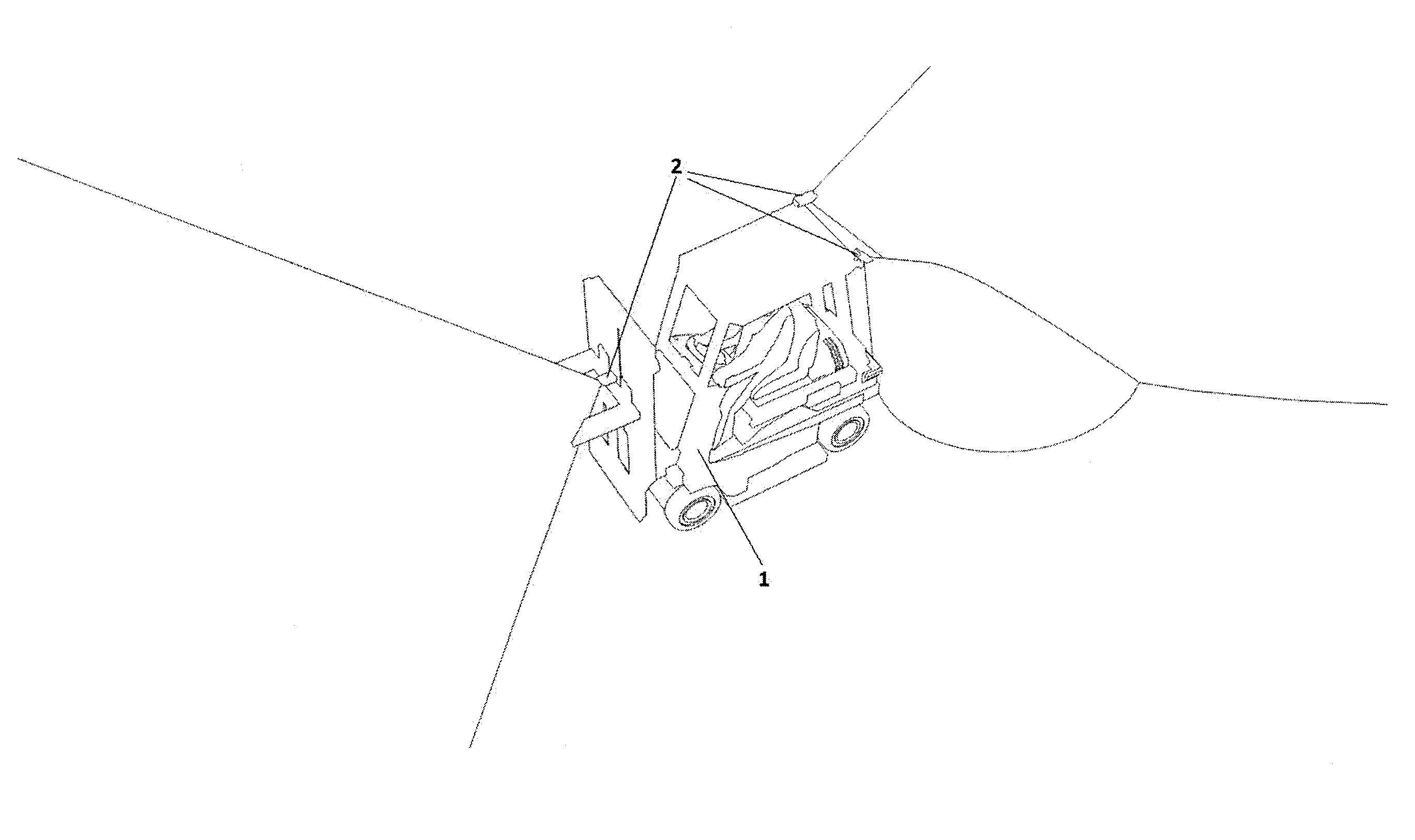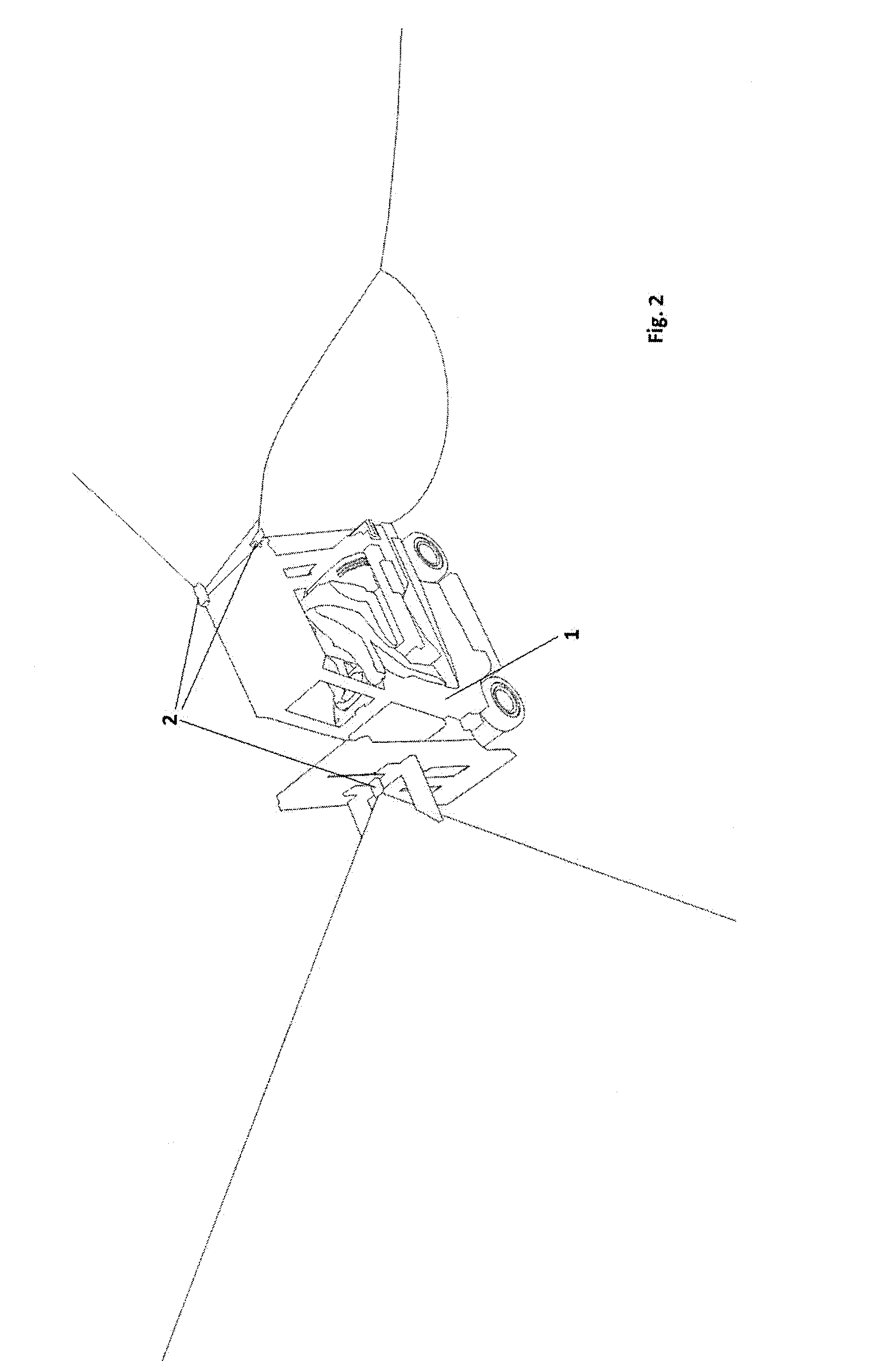This means that an exact determination of absolute position is not possible, instead a probable position is determined by way of an exclusion method; while in the best-case
scenario this does indeed correspond to the actual absolute position, it can also deviate significantly from the latter.
The determination of position by means of
laser radar scanning in accordance with known art encounters its limitations in particular if the environment is similar or the distances involved prevent or place limits on the scanning procedure (e.g. in the case of an empty warehouse with supporting pillars, with empty storage areas, or storage areas with stored goods items that have identical structures, or in the external environment).
However, this system has the
disadvantage that no determination of position is possible if there is no marker in the
field of view of the camera, i.e. no other system is available to execute a determination of position.
This in turn means that the storage depot must be fitted with very many markers; this leads to an extremely high level of expenditure, particularly in the case of large storage depots.
Moreover, by virtue of the attachment of markers to the ceiling, this system of known art is disadvantageously limited to an internal environment.
Apart from the fact that is in actual fact not possible to differentiate between ceiling lights that are usually of identical design by way of an optical sensor, e.g. using a
CCD camera or
photodiode array, or at best only with a high error rate, a trailing wheel is provided for purposes of registering the relative movement of the driverless vehicle; this is connected with the vehicle via a
vertical axis about which it can rotate.
In practice, however, such trailing wheels have proved to be extremely inaccurate (in particular as a result of problems with slip and drift).
What is particularly disadvantageous here is the fact that the installation of the reflecting markers in the ceiling region of a warehouse is very labour and cost intensive, and moreover the registration of the reference position is not always reliably guaranteed.
Furthermore problems arise in the measurement of the relative movement by means of the wheel
encoder and
gyroscope in terms of slip and drift of the vehicle (e.g.
spinning of the wheels), so that often the relative distance covered is incorrectly determined.
An application of this method in an external environment (with no roof) of a storage depot is impossible, or only if linked with substantial installation and cost expenditures.
As a result of the fact that the camera must be attached near the floor,
contamination of the camera
optics occurs to a large extent; this can lead to a high level of inaccuracy, or a failure, in the registration of the relative movement.
However, what is particularly disadvantageous, even in the case of EP 1 916 504, is the fact that, now as before, for purposes of registering the absolute reference position a very laborious and cost intensive installation of reflecting markers in the ceiling region is required.
Here too this takes the form of a technically
complex system with a multiplicity of sensors, which, in particular in cases where large surface areas are to be defined, are the cause of extremely high installation and investment expenditures.
However, what is particularly disadvantageous is the fact that the registration of a reference position of a vehicle is only possible if it drives over a
transponder, and thus there is no continuous registration of a reference position of a vehicle; this has a particularly disadvantageous consequence when e.g. setting down goods items in areas of the storage depot that are not fitted with transponders.
 Login to View More
Login to View More  Login to View More
Login to View More 


